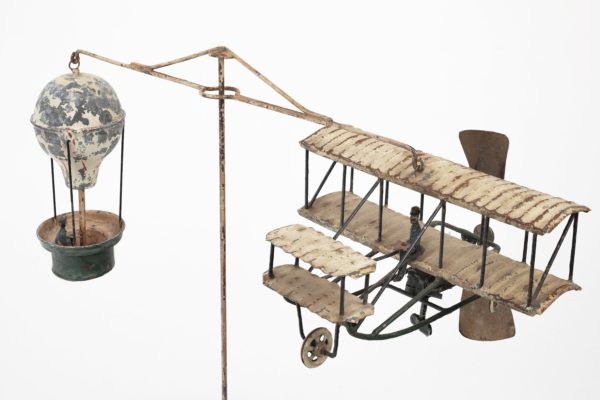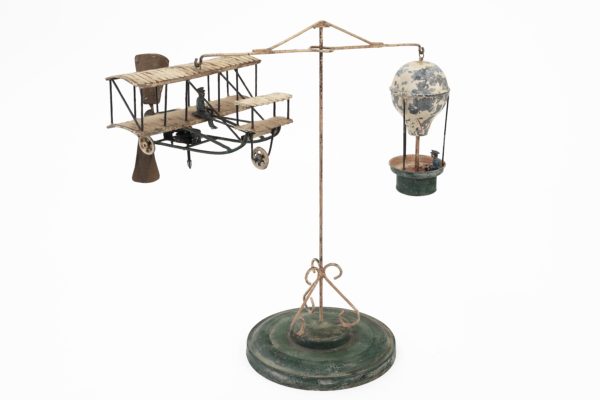In the 1860s, a debate began about the future of flight. Ponton d’Amécourt, opposed to Nadar, was convinced that air navigation would rely on a mechanical device heavier than air, and the future proved him right. In the meantime, ballooning still had a bright future ahead of it.
Before 1914, German toys illustrated this controversy.
Georges Carette
The aerial pursuit
From 1905, painted sheet metal, clockwork mechanism, 34 x 37 cm
Müller & Kadeder
Blériot airplane and airship
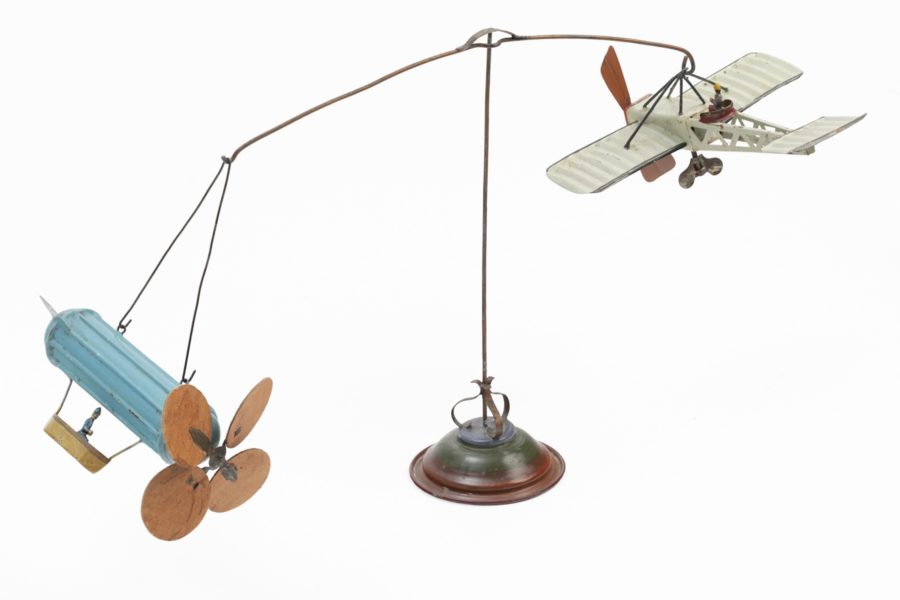
1910, painted sheet metal, clockwork mechanism in the airplane, 24 x 40 cm
Plank
Taubes and airships

1910–1914, painted sheet metal, powered by a steam engine or manually, 39 x 30 x 30 cm
Airplanes and airships
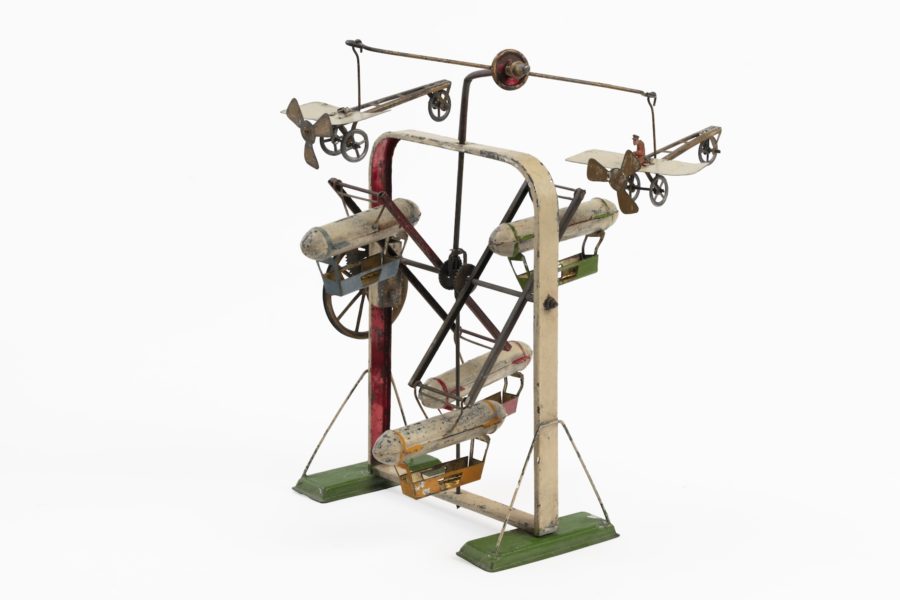
1910–1914, painted sheet metal, powered by a steam engine or manually, 24 x 20 x 20 cm
The Zeppelin era, Germany, between the wars.
Kellermann
Airplane and airship flying over boats
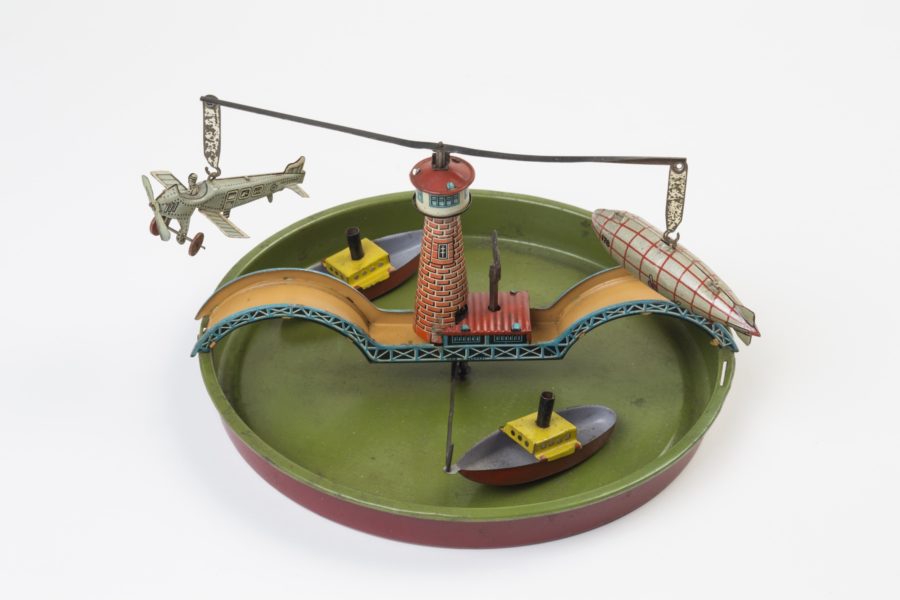
1928–1935, lithographed sheet metal, clockwork mechanism, 11.5 x 21 cm
Portable airplane and airship toy
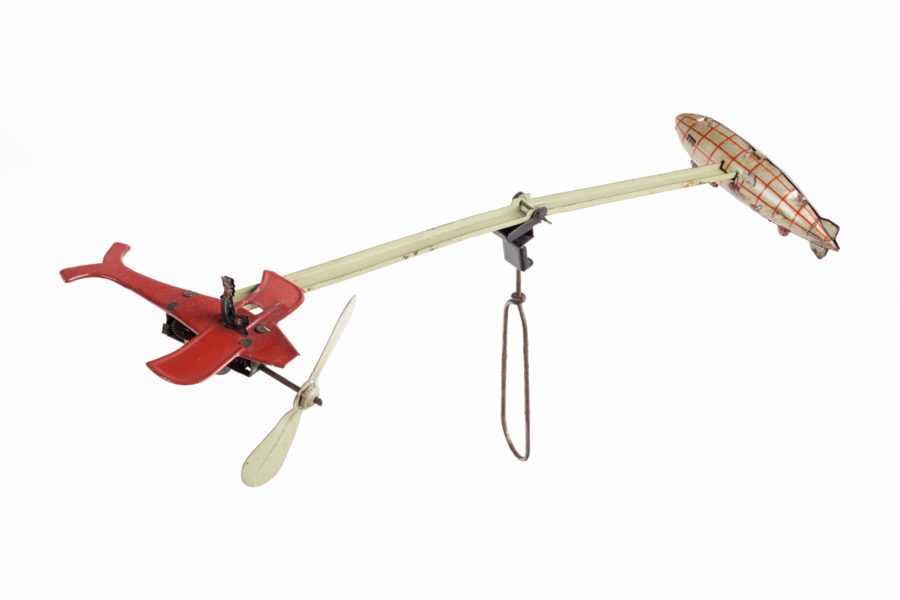
Circa 1928–1935, lithographed sheet metal, clockwork mechanism, 12.0 x 33.0 cm
Airships in the United States
Newton MFG Co
Aero Circus
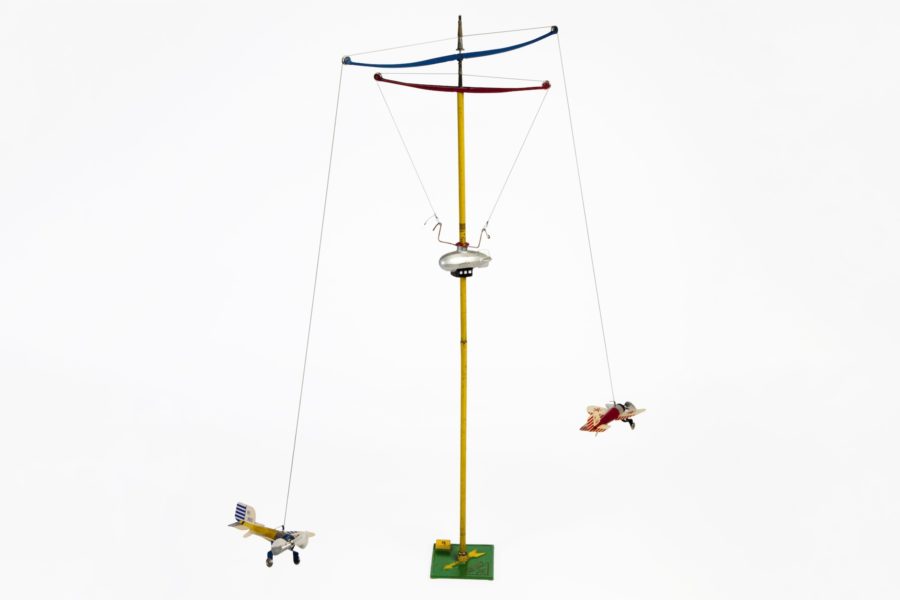
1931, painted cast iron, aluminum sheet metal, wood, cardboard, gravity-powered, 88 x 40 cm
Marx
Dare Devil Flyer

1928, lithographed sheet metal, spring mechanism in the airplane, 34 x 70 cm
Sky Bird Flyer
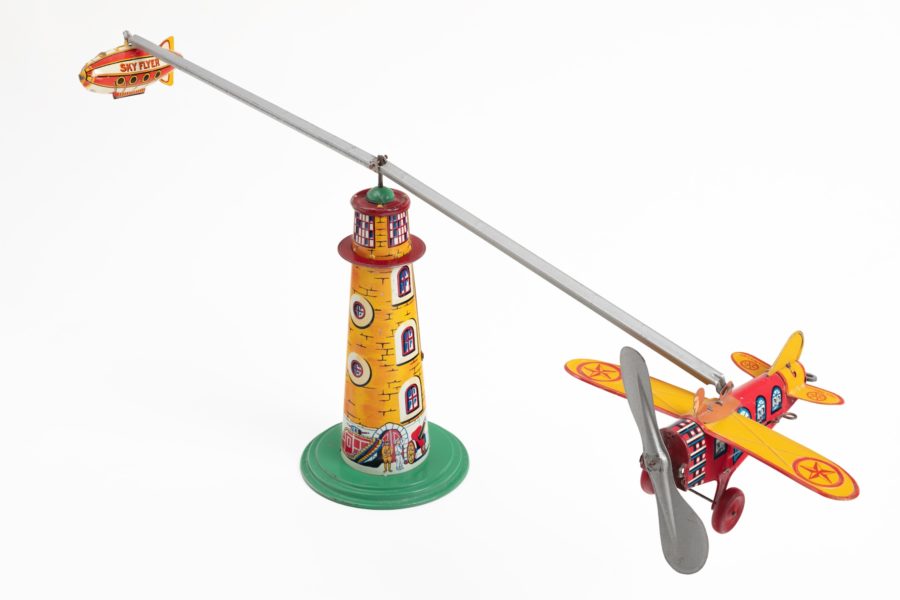
1937, lithographed sheet metal, spring mechanism in the plane, 24 x 67 cm
Unique Art
Sky Rangers
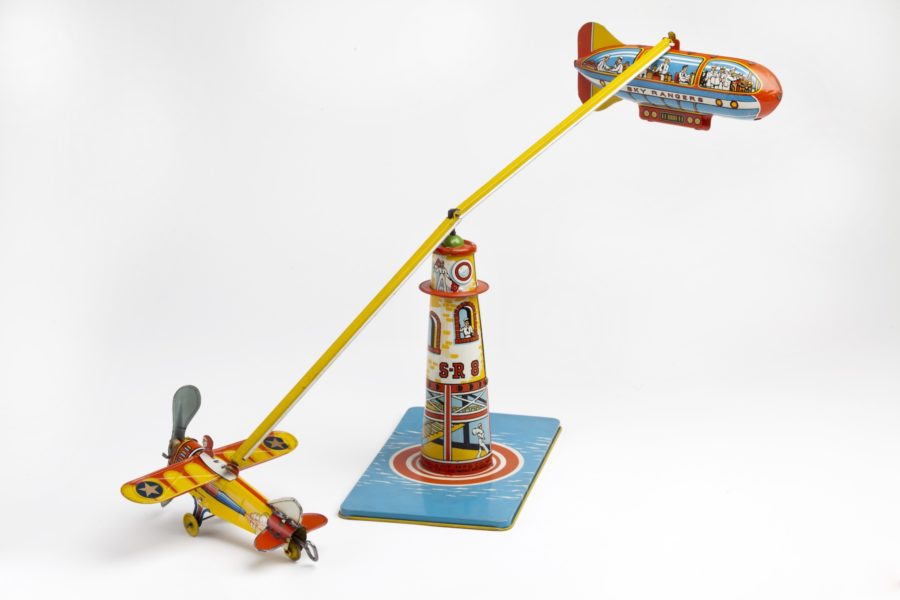
1930s, lithographed sheet metal, clockwork mechanism, 23 x 68 cm
The Lakehurst accident on May 6, 1937, sounded the death knell for lighter-than-air craft. Airships became a footnote in aviation history, and toy manufacturers lost interest in the subject.

